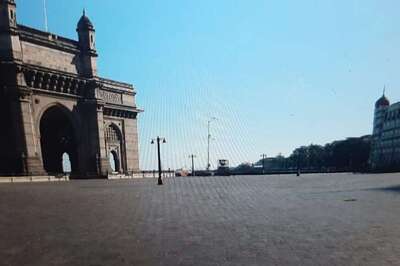
views
Perth: Grieving families of 239 people aboard the crashed Malaysian jet, including from India, have demanded the release raw satellite data to solve the over two-month-long aviation mystery even as an underwater drone is set to resume the hunt for wreckage in the remote Indian Ocean.
The next of kin of the passengers and crew of the Malaysia Airlines Flight MH370 have formed Voice370, short for MH370 Victims Families and Crew Association.
In an open letter signed by family members from China, Malaysia, the United States, New Zealand and India, it urged the Malaysian Government to release the raw Inmarsat data so that "it can be subject to broader analysis by relevant experts".
"The Inmarsat satellite data is the only lead we have and is key in identifying MH370's flight path after the plane vanished from civilian radar screens on March 8," the Star newspaper of Malaysia reported.
"In view of the lack of emergency locator transmitter activation and zero debris, we feel it is necessary that the data be subject to independent third-party review," said Voice370, which claims to represents 800 family members so far.
The letter, addressed to Malaysian Prime Minister Najib Tun Razak, Australian Prime Minister Tony Abbott and Chinese President Xi Jinping, also requested the Joint Agency Coordination Centre to release the pings recorded by the towed pinger locator, the paper said.
The Beijing-bound Boeing 777-200 plane, carrying 239 people, including five Indians, an Indo-Canadian and 154 Chinese nationals - had mysteriously vanished on March 8 after taking off from Kuala Lumpur.
Malaysia has been criticised for its handling of the tragedy, particularly by the relatives of the Chinese passengers on board the plane, besides being accused of hiding information.
The plane had lost contact with air traffic controllers over the South China Sea. Malaysia believes the flight was deliberately diverted by someone on board and that satellite data indicates it crashed in the Indian Ocean, west of the Australian city of Perth. A multinational search has so far not succeeded in tracking the aircraft or its black boxes despite deploying hi-tech gadgets.
Investigators, including the FBI, are looking into a range of aspects, including hijack, sabotage, personal and psychological problems, that may have caused the incident.
On Saturday, Australia said its defence vessel Ocean Shield has left for a second mission in the Indian Ocean to continue the hunt for the plane. The ship will deploy underwater vehicle Bluefin-21, which will search the seabed where pings from suspected black boxes were detected in April.
The initial deployment of Ocean Shield ran from March 31 until May 5. After five weeks at sea, it returned to port where a software update was run on Bluefin-21's scanner. It will take about three days for the ship to reach the search zone, Captain Mark Matthews said.
A total of 4.64 million square kilometres of ocean had been searched as of Tuesday, but no sign of wreckage from the plane has been found so far. He said the equipment will be used in the same area where sounds consistent with a black box locator were detected last month.
"That whole area has not been fully surveyed so they're continuing work there," he said. He said a team of experts from the Australian Transport
Safety Bureau, National Transportation Safety Board, Boeing and Inmarsat were looking again at the satellite data to make sure they refine as much as they can the broader search area.
The ship will return at the end of the month, and what happens beyond that will be determined by Malaysian, Australian and Chinese authorities, Mathews said. Last week, experts from Australia, Malaysia and China held a a tripartite ministerial meeting in Canberra to discuss the new phase of the search for the missing plane.
Malaysian Navy deputy chief Vice-Admiral Ahmad Kamarulzaman Ahmad Badaruddin said the meeting was "extremely positive and productive." Kamarulzaman said among the matters discussed in the closed-door meeting was on the mapping of the southern Indian Ocean floor and how state- of-the-art equipment would be rolled out in the new phase of SAR.
"The best technology will be put to bear for next phase in search of #MH370," he said, adding that technical and operational challenges in the SAR mission were also discussed. In a series of tweets, Kamarulzaman also described the characteristics of two underwater search equipment, namely the multibeam echosounder and backscatter, which were discussed during the meeting.
The multibeam echosounder for deep water could go to depths between 4,000m and 6,000m, compared with the Bluefin-21, which could only reach 4,500m.
"The best available (vessel mounted) multibeam systems (will be of) 12kHz or 30kHz (and will provide) high-resolution acquisition (and) information on seabed to improve autonomous under-water vehicle deployment options or navigation." The backscatter provides information to differentiate between "hard" and "soft" parts of the sea- bed and might provide targets for higher resolution survey work.
Universiti Sains Malaysia Associate Professor Mohd Rizal Arshad said that the multibeam echosounder and backscatter were acoustic imaging devices that would be mounted at the bottom of the vessel. He said the multibeam echosounder would emit sound waves from directly beneath a ship's hull, while the backscatter would be used to produce high-resolution maps of the seabed. "The raw data obtained will then be analysed to make 3D images," said Rizal, who specialises in underwater robotics technology.



















Comments
0 comment